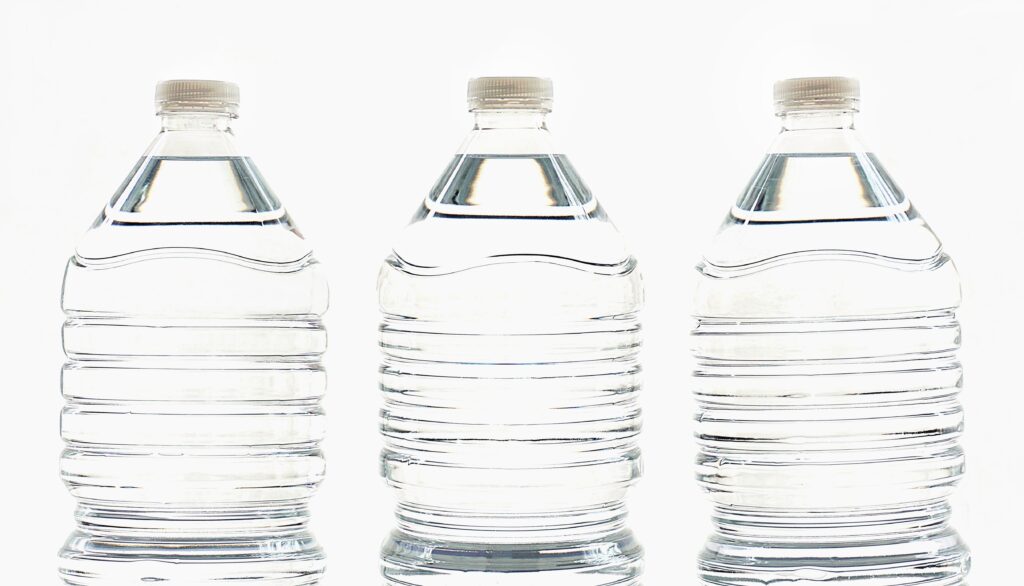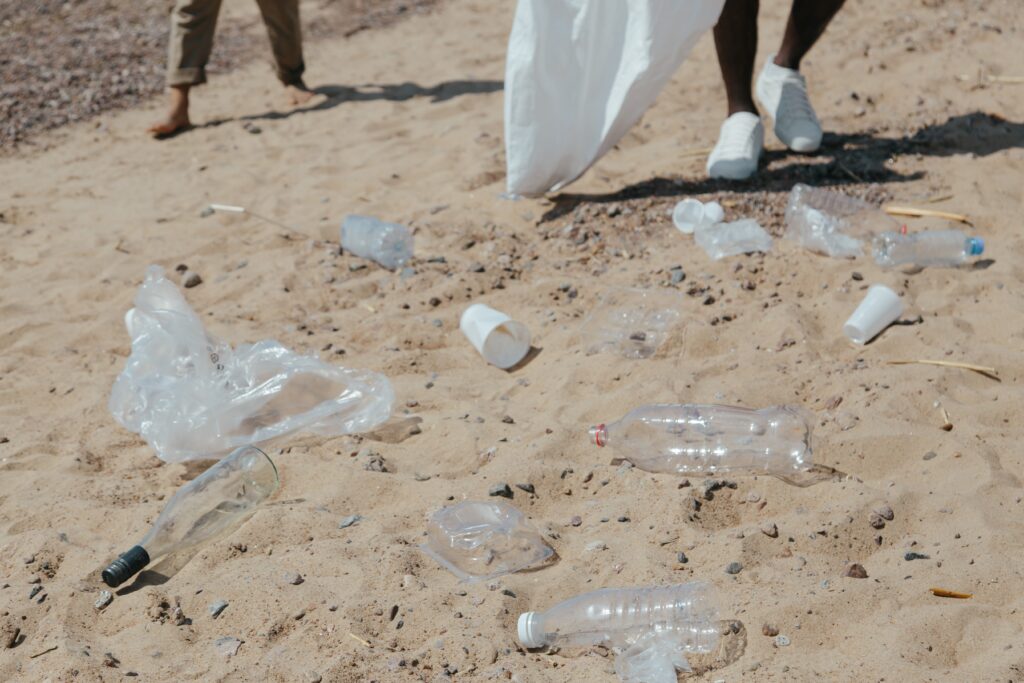Microplastic – not a micro problem.
Some ugly truth about plastic, what you need to know about microplastics.
Plastic is one of man’s most revolutionary inventions and made a huge and rapid development of society, and the world we know today is possible largely thanks to it. Very quickly we let plastic into almost every part of our lives, and today we wonder if it was worth it. What should we know about microplastics and how to protect ourselves from it?

To the highest mountain peaks and the deepest oceans!
We can distinguish 2 types of microplastics: primary and secondary. Microfibers washed out of materials, microbeads used in cosmetics and granules (nurdles) from which plastic is made are considered to be primary. Second type, i.e., secondary microplastics, as a result of tdecomposition – we can see them in waters. To make matters worse, unfortunately, microplastics have already reached every place you can think of. Scientists have found it in the deepest waters of the oceans, on the summit of Mount Everest [2] and in ice excavated in Antarctica.
“… plastic takes 20 to 1000 years to decompose.”
Since the invention, 70 years ago, 8.3 billion tons have been produced until today, most of which, almost 80%, ended up in landfills or directly into the natural environment.[1] Thus, we know that plastic decomposes from 20 to 1000 years, depending on the type of material. Therefore, we can say with high probability that every plastic product that you have ever held in your hands is somewhere on Earth. Only the discoveries of oceanologists and turned the eyes of science to the consequences of the breakdown of plastics. Researchers found small plastic particles initially in aquatic ecosystems and then in animals. As a result of these developments, Richard Thompson, a marine biologist and professor at the University of Plymouth, coined the term ‘microplastic’ in 2004, which is used to describe plastic particles that are less than 5mm long.
Microplastic is not a micro problem.
Plastic waste that has ended up in the ocean, so as we can guess, it comes in all the colors of the rainbow, just like on the shelves in the store. Packaging made of plastics, after breaking down into smaller pieces, do not lose their color and have an irregular shape, which means that animals treat them as food. Researchers performed an autopsy on a 3-week-old turtle that had 42 pieces of plastic of various sizes in its body. A very sad picture of the modern world, where man is responsible for the negative impact on every life on the planet.
What about animals and microplastics?
Another example that has been under the supervision of specialists is zooplankton, i.e. one of the representatives of the basic food of some fish. As a result of exposure to microplastic fibers, the plankton produced up to half as many eggs, reached a smaller size as an adult, and also had noticeable body deformities.[3] The truth is that microplastics are showing up more and more in unheard of missions, so it’s important to avoid them as much as possible. Ecological cleaning products, vegan products, paper packaging – small steps forward :) You can read about why our packaging does not contain plastic (even the micro plastic) and how we care about ecology here.

Impact on people and ecology – is there anything to be afraid of?
Plastic and microplastics have arrived everywhere. Currently, its occurrence is confirmed in the soil, in the air, in bottled and tap water too. Every time a plastic wrap comes in contact with warm food or liquid, it releases microplastic particles into it.[4] According to the WWF report, we consume, under very optimistic assumptions, 5g of plastic per week, i.e. as much as is needed to produce a payment card[5] or as much as the weight of a chocolate cube. It’s hard to tell if that’s a lot or not. In fact, it is not the amount that matters here, but what effect it has on the human body.
What are the scientists saying?
So far, researchers have been very cautious about their opinions due to the insufficient amount of confirmed data, while the latest study published in November 2021 by Evangelos Danopoulos and his colleagues from Hull York Medical School in Great Britain is the first to provide evidence of the negative impact of microplastics on the human body. Scientists have shown that it can lead to cell damage, cell death or allergic reactions.[6] A few words about microplastics and their impact on the environment can be found in the article on the WWF website about microplastics.
Microplastics in the future – We can be sure that the problem will only grow. Plastic, which has already been created, is a huge environmental problem, and it seems that the end of its global production will not happen soon. After reading this article, you probably don’t need any more motivation to reduce plastic in your daily life.
Accepting that we live on a planet that is polluted with plastic everywhere is difficult but necessary for our mental health. However, acceptance certainly does not mean no action. Therefore, what you can do is take small steps towards reducing plastic. Go ahead and make these a little bigger and encourage the people around you to do the same. Changing habits seems difficult, but it is possible :)
You can start with us! #addyourdrop
Nature is also trying to solve the problem of microplastic pollution. Now, we know about mussels and mushrooms that absorb it, but we will describe these interesting discoveries next time.
[1] Roland Geyer, Jenna R. Jambeck, Kara Lavender Law, Science Advances, 19 lipca 2017, Vol 3, Wydanie 7
[2] Napper et al., 2020, One Earth 3, 621–630
November 20, 2020, a 2020 The Authors. Published by Elsevier Inc.
[3] Ziajahromi, S., Kumar A., Neale, P. A. & Leusch, F. D. L. Environ. Sci. Technol. 51, 13397–13406 (2017)
[4] Li, D. et al. Nature Food 1, 746–754 (2020)
[5] [5] Dr Thava Palanisami, No Plastic in Nature: Assessing Plastic Ingestion from Nature to People, (2019)
[6] Danopoulos, Evangelos & Twiddy, Maureen & West, Robert & Rotchell, Jeanette. (2021). A Rapid Review and Meta-regression Analyses of the Toxicological Impacts of Microplastic Exposure in Human Cells. Journal of Hazardous Materials. 427. 127861. 10.1016/j.jhazmat.2021.127861.





